1. Fuscaldo G, Cadwell M, Wallis K, Fry L, Rogers M. Developing clinical ethics support for an Australian Health Service: a survey of clinician’s experiences and views. AJOB Empir Bioeth. 2019; 10(1):44–54. PMID:
30908109.
2. Jansky M, Marx G, Nauck F, Alt-Epping B. Physicians’ and nurses’ expectations and objections toward a clinical ethics committee. Nurs Ethics. 2013; 20(7):771–783. PMID:
23715555.
3. Fox E, Myers S, Pearlman RA. Ethics consultation in United States hospitals: a national survey. Am J Bioeth. 2007; 7(2):13–25.
4. Slowther A, Bunch C, Woolnough B, Hope T. Clinical ethics support services in the UK: an investigation of the current provision of ethics support to health professionals in the UK. J Med Ethics. 2001; 27:Suppl 1. (Suppl 1):i2–i8. PMID:
11314606.
5. Rasoal D, Skovdahl K, Gifford M, Kihlgren A. Clinical ethics support for healthcare personnel: an integrative literature review. HEC Forum. 2017; 29(4):313–346. PMID:
28600658.
6. Wasson K, Anderson E, Hagstrom E, McCarthy M, Parsi K, Kuczewski M. What ethical issues really arise in practice at an academic medical center? A quantitative and qualitative analysis of clinical ethics consultations from 2008 to 2013. HEC Forum. 2016; 28(3):217–228. PMID:
26423767.
8. Lee I. Perspective on patient end-of-life decision act and clinical ethics service. J Korean Bioethics Assoc. 2017; 18(1):35–45.
9. Choi K. Clinical ethics consultation and hospital ethics committees. Korean J Med Ethics. 2017; 20(4):359–375.
10. Park SH, Koh Y. Attitudes toward medical ethics among resident physicians in one Korean university hospital. Korean J Med Ethics. 2007; 10(2):109–116.
11. Kim MS, Kim CH, Hong J, An AR, Choi EK, Keam B, et al. A survey of the ethical problems faced by healthcare professionals and the need for clinical ethics consultation services in university hospitals in South Korea. Korean J Med Ethics. 2017; 20(3):376–385.
12. Yoo SH, Choi W, Kim Y, Kim MS, Park HY, Keam B, et al. Difficulties doctors experience during life-sustaining treatment discussion after enactment of the Life-Sustaining Treatment Decisions Act: a cross-sectional study. Cancer Res Treat. 2021; 53(2):584–592. PMID:
33211941.
13. Heo DS, Park HY, Hong J, Lee J, Keam B. The roles of hospital ethics committee and clinical ethics consultation teams. Korean J Med Ethics. 2017; 20(4):353–358.
14. Milliken A, Courtwright A, Grace P, Eagan-Bengston E, Visser M, Jurchak M. Ethics consultations at a major academic medical center: a retrospective, longitudinal analysis. AJOB Empir Bioeth. 2020; 11(4):275–286. PMID:
32940565.
15. Thomas SM, Ford PJ, Weise KL, Worley S, Kodish E. Not just little adults: a review of 102 paediatric ethics consultations. Acta Paediatr. 2015; 104(5):529–534. PMID:
25611088.
16. Toh HJ, Low JA, Lim ZY, Lim Y, Siddiqui S, Tan L. Jonsen’s four topics approach as a framework for clinical ethics consultation. Asian Bioeth Rev. 2018; 10(1):37–51. PMID:
33717274.
17. Jonsen AR, Siegler M, Winslade WJ. Clinical Ethics: A Practical Approach to Ethical Decisions in Clinical Medicine. 9th ed. New York, NY, USA: McGraw-Hill Education;2015.
18. Lo B. Resolving Ethical Dilemmas: A Guide for Clinicians. 6th ed. Philadelphia, PA, USA: Lippincott Williams & Wilkins;2019.
19. Gorka C, Craig JM, Spielman BJ. Growing an ethics consultation service: a longitudinal study examining two decades of practice. AJOB Empir Bioeth. 2017; 8(2):116–127. PMID:
28949846.
20. Davies B, Sehring SA, Partridge JC, Cooper BA, Hughes A, Philp JC, et al. Barriers to palliative care for children: perceptions of pediatric health care providers. Pediatrics. 2008; 121(2):282–288. PMID:
18245419.
21. Coventry PA, Grande GE, Richards DA, Todd CJ. Prediction of appropriate timing of palliative care for older adults with non-malignant life-threatening disease: a systematic review. Age Ageing. 2005; 34(3):218–227. PMID:
15863407.
22. Choi K. Issues and tasks in the Hospice, Palliative Care, and Life-sustaining Treatment Decision-making Act. Korean J Med Ethics. 2016; 19(2):121–140.
23. Jeong GH, Nam SH, Jung EJ, Lee JH, Lee YK, Kim JS, et al. Policy Implications of Changes in Family Structure: Focused on the Increase of Single Person Households in Korea. Sejong, Korea: Korea Institute for Health and Social Affairs;2012.
24. Kim B, Kim M. Developing policy for life sustaining treatment decision for patient without surrogate. Korean J Med Ethics. 2018; 21(2):114–128.
25. Kim B, Kim M. Using a health care proxy to overcome limitations of the Act on Decisions on Life-sustaining Treatment. Korean J Med Ethics. 2018; 21(2):95–113.
26. Kim K, Huh J. Problems with the decision to end life of unrepresented persons and the tasks of the ethics committee. Korean Journal of Medicine and Law. 2020; 28(1):7–34.
27. Kayser JB, Kaplan LJ. Conflict management in the ICU. Crit Care Med. 2020; 48(9):1349–1357. PMID:
32618689.
28. Nicoli F, Cummins P, Raho JA, Porz R, Minoja G, Picozzi M. “If an acute event occurs, what should we do?” Diverse ethical approaches to decision-making in the ICU. Med Health Care Philos. 2019; 22(3):475–486. PMID:
30671733.
29. Au SS, Couillard P, Roze des Ordons A, Fiest KM, Lorenzetti DL, Jette N. Outcomes of ethics consultations in adult ICUs: a systematic review and meta-analysis. Crit Care Med. 2018; 46(5):799–808. PMID:
29394183.
30. Picozzi M, Gasparetto A. Clinical ethics consultation in the intensive care unit. Minerva Anestesiol. 2020; 86(6):670–677. PMID:
32000471.
31. Fukuyama M, Asai A, Itai K, Bito S. A report on small team clinical ethics consultation programmes in Japan. J Med Ethics. 2008; 34(12):858–862. PMID:
19043109.
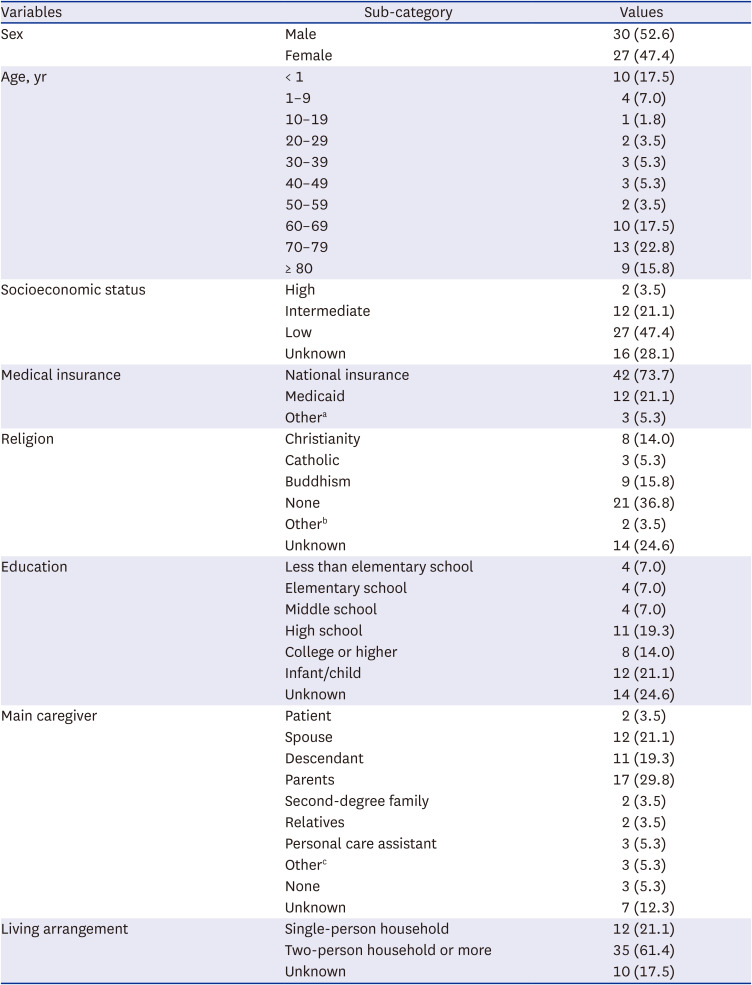
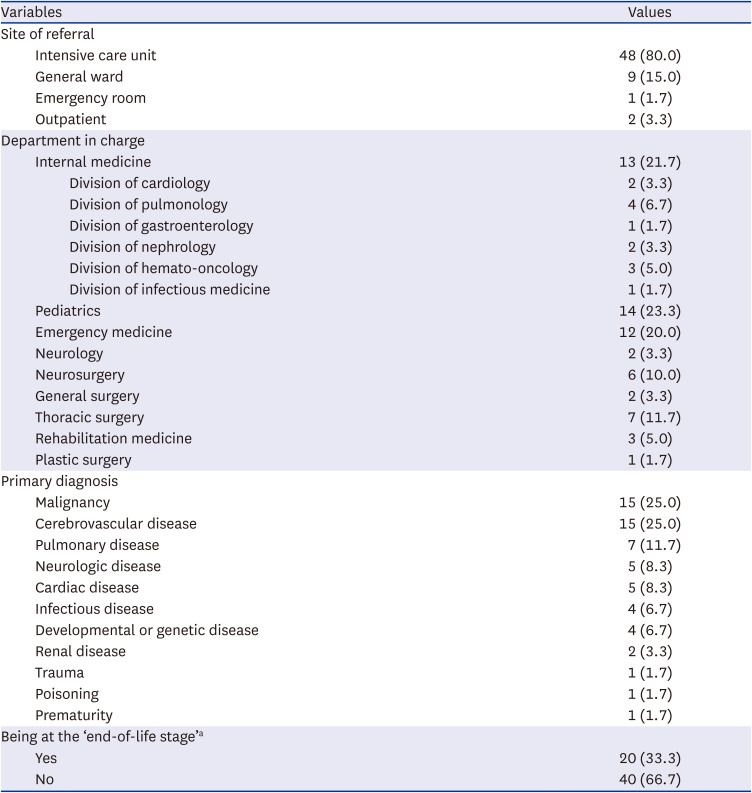
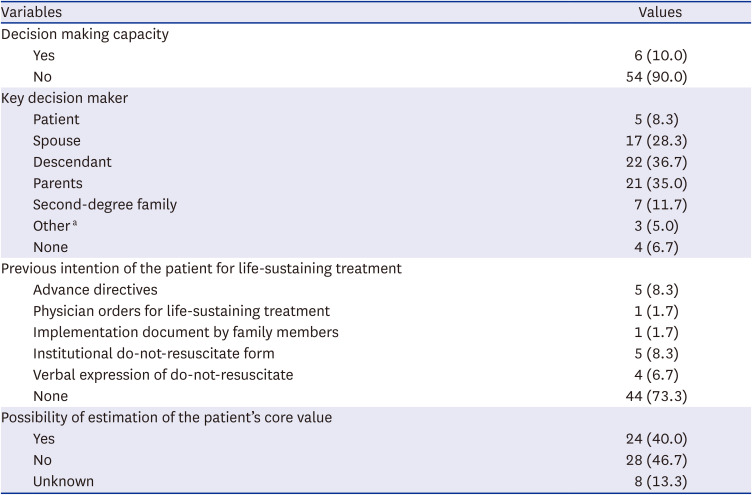
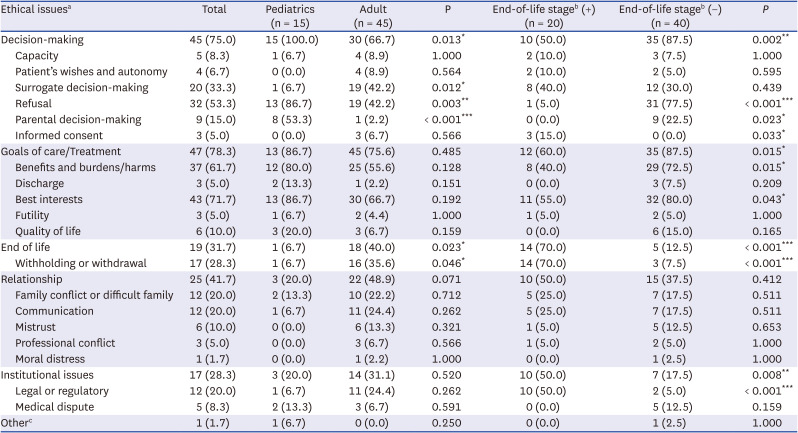
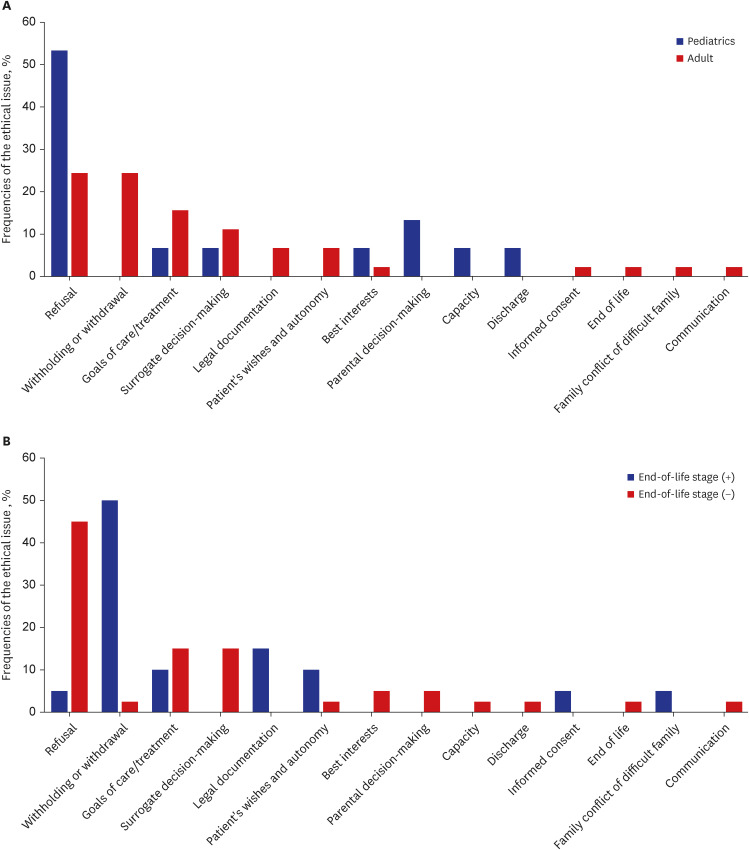




 PDF
PDF Citation
Citation Print
Print



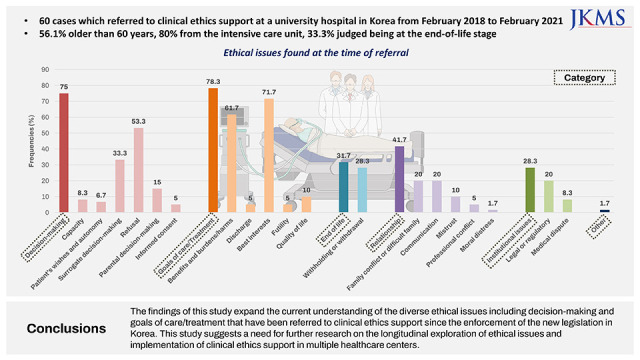
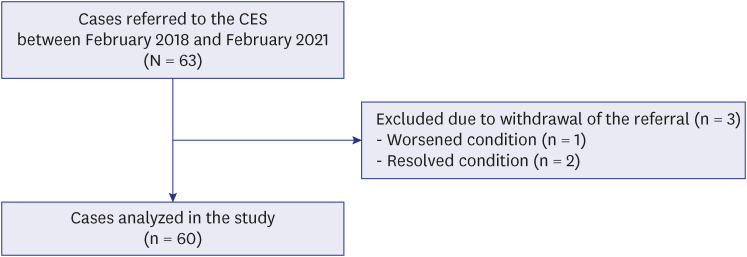
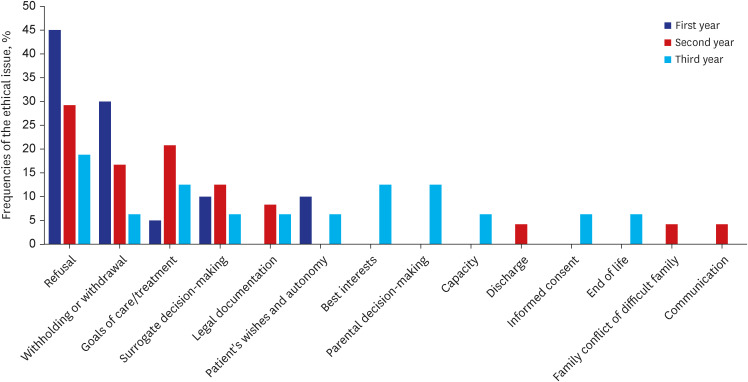
 XML Download
XML Download